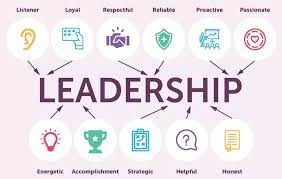What is the role of leadership in training and development?
Leadership development is defined as “expanding the ability of individuals to be effective in leadership roles and processes” (McCauley, Van Veslor, and Rudeman, 2010, p. 2). These roles and processes help set the direction, build partnerships, and maintain involvement in groups of people with whom we share work.
Leadership research and education programs manager leadership training in Singapore in most organizations focus on the development of individual knowledge, skills, and abilities related to the role of individual formal leadership (human capital) (Day, 2000). Therefore, leadership development is done through investment in human capital. There is no specific theory for deriving leadership development, but development theory unleashes two aspects of development: learning and change.
Development is a form of change, and it is impossible for leaders to develop without change (Day & Zacarro, 2004). Learning is defined as achieving lasting change in an individual through practice or experience, which promotes change and development (Day & Zacarro, 2004). Learning stems from two traditions: permanent behavioral changes following activist experiences and changes or creation of new mental models based on Gestalt psychology.

Activism makes it possible to use performance as an indicator of leader behavior. In contrast, Gestalt psychology studies the creation of new mental models that emerge from experiences that can help leaders develop their abilities within an individual. Incorporating activism and Gestalt traditions together is considered complementary in that developments arise from both changes in mental models and the creation of new behaviors (Hogan and Warrenfeltz, 2003).
Leadership development is described as one aspect of the broader process of leadership development (McCauley et al., 2010). Leadership development is defined as the expansion of the group’s ability to generate direction, integrity, and commitment, as opposed to leadership development, which is the expansion of the individual’s ability to be effective in leadership roles and processes. (McCauley et al.).
You can further distinguish between the two by looking at the components of each model. Leadership development focuses on the development of individual knowledge, skills and abilities (human capital), and leadership development focuses on building networked relationships (social capital) between individuals within an organization. Leadership development presupposes that effective leadership arises through the development of individual leaders, but leadership development is a function of social resources rooted in relationships (Day, 2000).
Leadership development focuses on self-awareness, self-regulation, and self-motivational in-person skills. Leadership development focuses on social awareness and interpersonal skills in social skills (Day, 2000). Day (2000) argues that what most organizations call leadership development should be more accurately called leadership development.
Organizations cannot take either approach. Instead, effective development requires a bridge between leadership and leadership development (Kegan, 1994). Therefore, it is important to combine both leadership and leadership development to develop in-person skills that underlie interpersonal skills. Read more…



Comments
Post a Comment